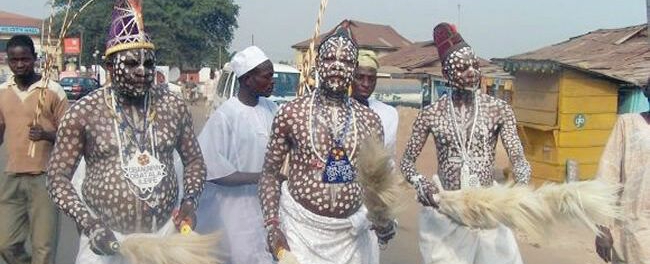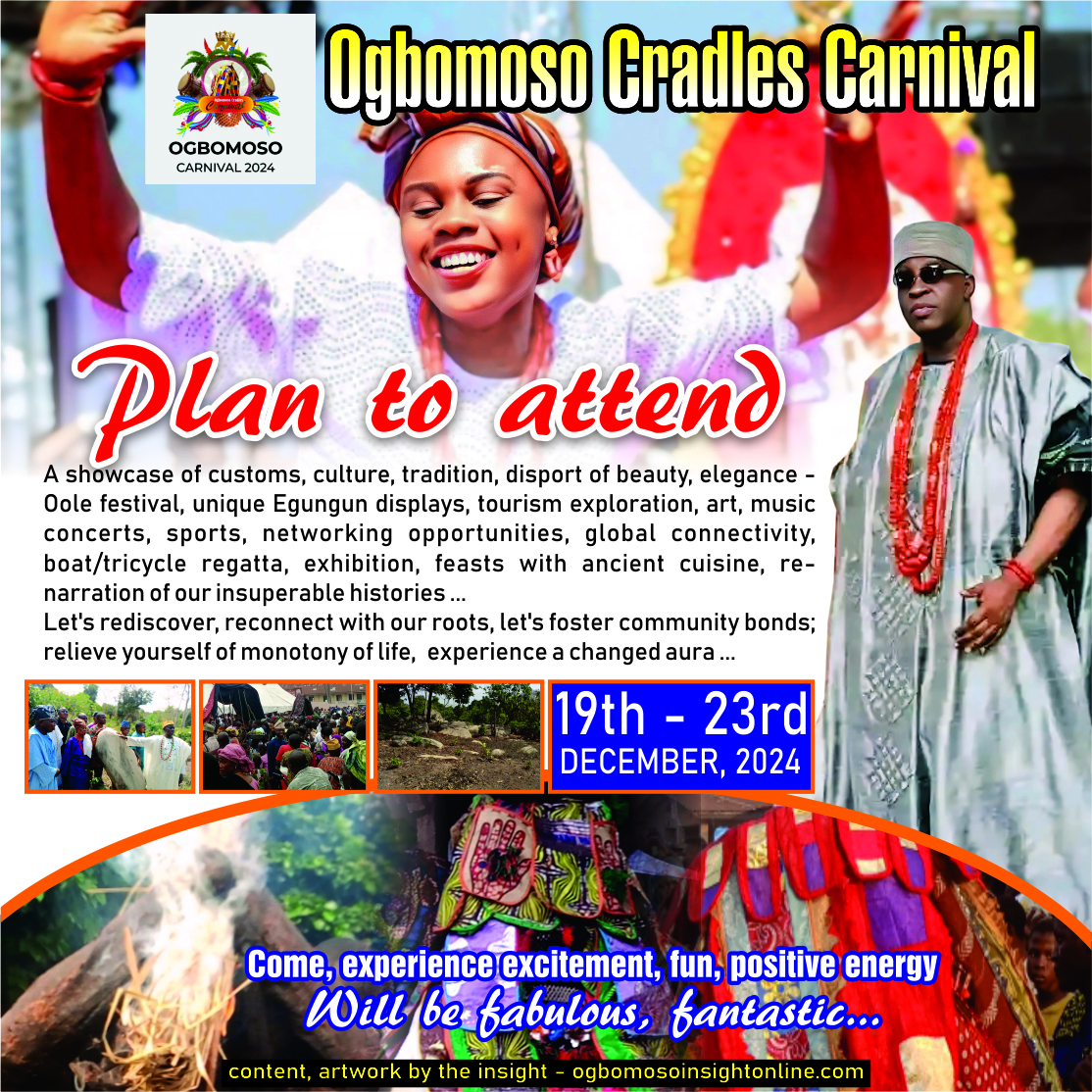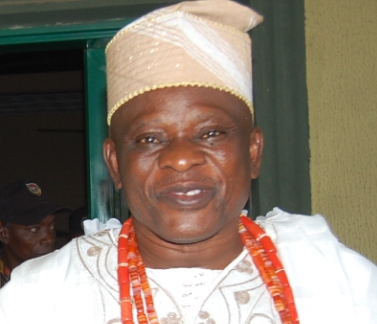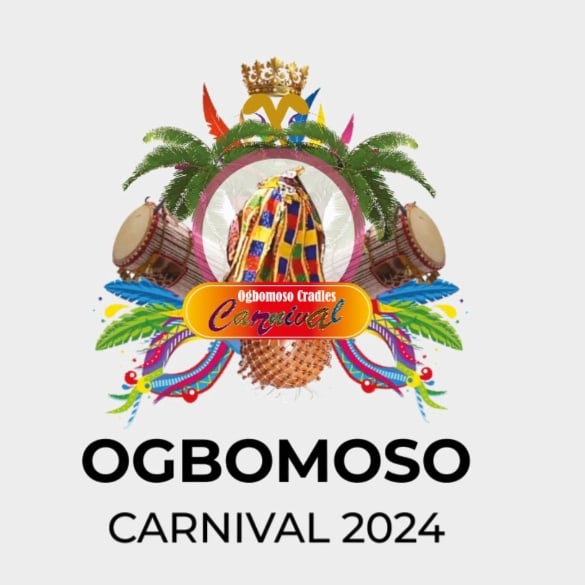EXCLUSIVE: Origin of Oro and Egungun in Yorubaland
Femi OGUNLANA
The annual Oro festival commenced in Ogbomoso Friday, June 7, and is expected to last a week. After which the one referred to as “Itadogun” will come up 15 days later. There was a move to shift the festival this year but was resisted on the ground that their ancestors held it in June “for a reason.” Weeks after Oro festival, Egungun festival will commence, lasting one and a half weeks.
Advertisement
Oro is a festival held in dread by the non -initiates because it appears in the dead of night and forbids women sighting it, violation results in certain death for the unfortunate woman no matter her status or husband’s. We read of a Baale of Ogbomoso in years past who defied the tradition by hiding one of his wives under the veil of his stool so she could have a good view of the spooky Oro deity. The Oro felt the intrusion behind the mask and she paid the supreme price.
The Oro is so frightful, said to be decked in a robe with shells and wears a white wooden mask with blood smeared on the lips. When it hits the street, it trudges alone, according to findings by insightonline.com, its votaries and custodians walk far ahead whipping split bamboos that give swishing or “wom wom” sound.
Oro used to come out in broad daylight in the past implying women were forbidden to venture out in the day. But this was discontinued in Ogbomoso in about the middle of the last century sequel to relentless agitations and street protests led by Rev’d Aisa Ige of Ijeru Baptist Church against the perpetuation of the practice. The fiery cleric who pastored Ijeru Baptist Church for about 60 years led women out during the day to confront the Oro cult leading to its restriction to night time as is celebrated today.
Advertisement
Oro festival is often a big event for adherents, contributing significantly to the economic prosperity of the host community.
“During the annual festival, followers come from different places to celebrate with us,” a practitioner, Chief Dele Orokale told ogbomosoinsightonline.com.
“Every family that celebrates Oro festival has people traveling from outside to join them in the celebration. There are lots of cooking and festivities and these contribute to boosting the economy of the town. But many people do not know this.”
Chief Orokale added that the festival is an occasion to pray for the town and its people, for peace to reign, for security, warding off of evil, prosperity and health.
Advertisement
But how did it all evolve?
The answer for this is provided in an interview granted Ogbomoso Insight (The Insight) newspaper in 2003 by a former traditionalist and Egungun practitioner, popularly called “Omo Awo” in his heyday in the cult now “Ade Omo Jesu” -Rev’d Isaac Adediran Ade Omo Jesu.
According to Rev’d Ade Omo Jesu, who was the masquerader of the now rested famous but dreaded Eegun Omo Awo (real name – Alapasa Jigan Ekun), Oro and Eegun were like Siamese twins borne out of the same nasty experience.
“Ise lobi Eegun, osi lobi Oro,” is how he put it – “Poverty gave birth to Eegun, penury gave rise to Oro.”
Advertisement

He explained: “There were two siblings, who left their town (names not stated) in search of greener pasture. They made every effort to work their way to prosperity but the attempts fell through.
“They rather found themselves entrenched in the depths of destitution and deprivation, burdened by affliction and need. Ultimately, they made the choice to journey back to their place of origin. However, due to a sense of embarrassment, especially for the women and children, and a lack of confidence to present themselves in public without adequate attire and accouterments of prosperity, they devised a plan to make their return under the cover of night. They believed that emerging in the daylight after an extended absence from the town they were raised in would subject them to ridicule, thus solidifying their decision to return under the veil of darkness.
“So, they contacted the elders of the town by sneaking in at night, to intimate them of their situation and plans. Instead of returning like paupers they said one of them would appear decked in tattered clothes while the other would be concealed in palm fronds resembling heavenly returnees on earth on a mission to bring messages from their dead ancestors.
“The elders consented, they thus turned artistes who conjured the mysterious, which ended up in the enactment of an enduring traditional legacy. Their design is what evolved into Egungun and Oro cults today, widely celebrated in Yorubaland, each retaining unique features of the original design. So, when you hear Egungun being hailed as ‘Ara Orun kin-kin-kin (Heavenly being),’ and women being barred from beholding Oro, they are a reflection of the original scheme of the founding brothers.”
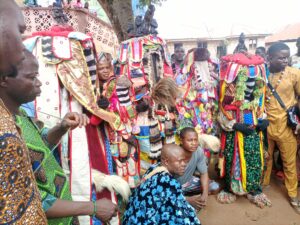
The one in tattered attires became the Egungun while the one in fronds evolved into Oro. And their guise of heavenly errand spirits have survived.
